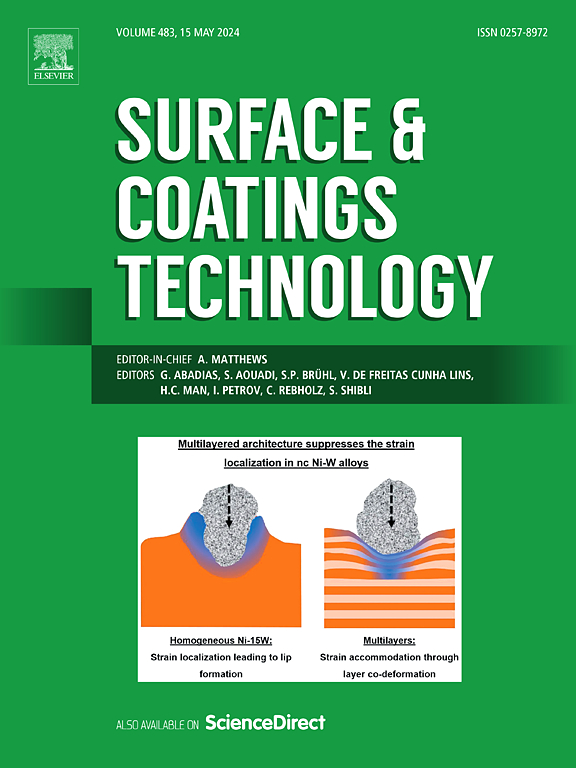Microstructure influence on functional properties of HVOF deposited NiCoCrAlY bond coat - SPS YSZ topcoat systems
IF 5.3
2区 材料科学
Q1 MATERIALS SCIENCE, COATINGS & FILMS
引用次数: 0
Abstract
Advanced thermal barrier coatings (TBCs) consisting of suspension plasma sprayed (SPS) topcoat and high-velocity oxy-fuel (HVOF) deposited bond coat were used in this study. Hastelloy-X substrates were coated with NiCoCrAlY bond coat using HVOF and yttrium stabilized zirconia (YSZ) with SPS techniques, respectively. Eight different topcoats were investigated with the standard HVOF bond coat for a lifetime and functional properties evaluation. Diverse microstructural features like interpass porosity, vertical and branching cracks in the coatings revealed a substantial influence on the lifetime and functional properties of the coatings. Thermal cyclic fatigue (TCF) and thermal shock tests were performed to evaluate the lifetime of the coatings and functional properties were assessed using laser flash analysis (LFA), air jet erosion tester, micro-indentation, etc. Specific emphasis on the sintering behavior of the microstructure and the mechanism behind the coating failure was detailed in this work. The findings demonstrate that HVOF-SPS systems offer a promising alternative to conventional coating technologies.
求助全文
约1分钟内获得全文
求助全文
来源期刊

Surface & Coatings Technology
工程技术-材料科学:膜
CiteScore
10.00
自引率
11.10%
发文量
921
审稿时长
19 days
期刊介绍:
Surface and Coatings Technology is an international archival journal publishing scientific papers on significant developments in surface and interface engineering to modify and improve the surface properties of materials for protection in demanding contact conditions or aggressive environments, or for enhanced functional performance. Contributions range from original scientific articles concerned with fundamental and applied aspects of research or direct applications of metallic, inorganic, organic and composite coatings, to invited reviews of current technology in specific areas. Papers submitted to this journal are expected to be in line with the following aspects in processes, and properties/performance:
A. Processes: Physical and chemical vapour deposition techniques, thermal and plasma spraying, surface modification by directed energy techniques such as ion, electron and laser beams, thermo-chemical treatment, wet chemical and electrochemical processes such as plating, sol-gel coating, anodization, plasma electrolytic oxidation, etc., but excluding painting.
B. Properties/performance: friction performance, wear resistance (e.g., abrasion, erosion, fretting, etc), corrosion and oxidation resistance, thermal protection, diffusion resistance, hydrophilicity/hydrophobicity, and properties relevant to smart materials behaviour and enhanced multifunctional performance for environmental, energy and medical applications, but excluding device aspects.
 求助内容:
求助内容: 应助结果提醒方式:
应助结果提醒方式:


